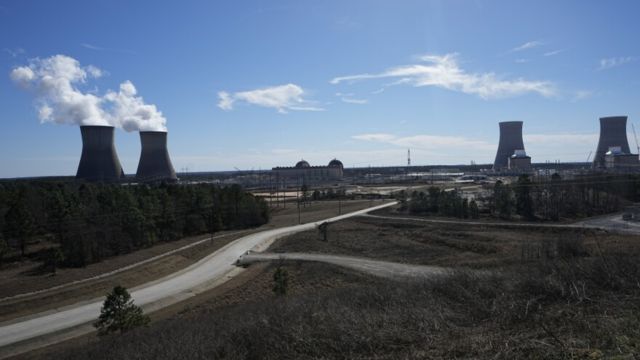The Georgia Power Company’s number four unit at Plant Vogtle has recently achieved commercial operation for its second new nuclear reactor. Although the project incurred higher costs and faced delays compared to the initial projections, the reactor now successfully generates carbon-free electricity by harnessing the power of split atoms. In addition to Georgia, utilities in select areas of Alabama, Jacksonville, Florida, and the Florida Panhandle have also signed contracts to purchase power from Vogtle.
These are the first two nuclear reactors constructed in the United States in decades.
The projected cost for the new Vogtle reactors is estimated to be around $31 billion for Georgia Power and its three other owners, as calculated by The Associated Press. Additionally, Vogtle owners received $3.7 billion from original contractor Westinghouse as compensation for discontinuing the construction, bringing the total expenditure close to $35 billion.
Georgia’s electric customers have already shouldered the burden of paying billions for what could potentially become the most costly power plant in history. Initially estimated to cost $14 billion and anticipated for completion by 2017, these reactors have proven to be a significant financial investment.
The completion of the plant was celebrated on Monday by utilities and their political allies. Georgia Governor Brian Kemp expressed gratitude for this significant milestone achieved by Georgia Power and its partners. Chris Womack, the CEO of Atlanta-based Southern Co., which is the owner of Georgia Power, emphasized that Vogtle will enhance the reliability and resilience of the state’s electrical grid. He also highlighted how the plant will contribute to the utility’s objective of achieving zero carbon emissions by 2050.
“These new Vogtle units not only support the economy within our communities now and in the future, but they also showcase our global nuclear leadership,” Womack stated.
The two new reactors have the capacity to provide electricity to 500,000 homes and businesses, all while maintaining a carbon-free operation.
Even those who oppose Vogtle acknowledge that nuclear power is crucial for achieving carbon-free electricity in the United States. However, Georgia Power, along with other utilities, intends to construct additional fossil fuel generation facilities in response to the surging demand, which is primarily driven by computer data centers. This increasing demand is being experienced by multiple utilities nationwide.
Vogtle’s electricity will never be cheaper than other sources that the owners could have chosen, even with the federal government reducing borrowing costs by guaranteeing repayment of $12 billion in loans, according to calculations.
According to Liz Coyle, executive director of Georgia Watch, a consumer group that fought to limit rate increases, the two new units at Plant Vogtle, despite being seven years late and billions over budget, are expected to perform well for at least the next 80 years in order to justify the excessive cost.
In Georgia, Vogtle’s costs are shared among nearly all electric customers. Georgia Power holds the majority share of 45.7% ownership in the reactors, while smaller portions are owned by Oglethorpe Power Corp., which supplies electricity to member-owned cooperatives, as well as the Municipal Electric Authority of Georgia and the city of Dalton.
In December, regulators gave their approval for Georgia Power to impose a 6% rate hike on its 2.7 million customers. This rate increase is intended to cover the remaining $7.56 billion in costs associated with the Vogtle project, with the company itself absorbing $2.6 billion of those costs. As a result, the average residential customer can expect to see an extra $8.97 added to their monthly bill starting in May. This comes on top of the $5.42 increase that was implemented when Unit 3 was first put into operation.
While government officials and utilities are considering nuclear power as a solution to combat climate change, the expensive nature of Vogtle might deter utilities from pursuing this option. Vogtle’s failures have already influenced American utilities to abandon plans for 24 other reactors proposed between 2007 and 2009, and even two half-built reactors in South Carolina were left unfinished. However, Westinghouse continues to promote the reactor design internationally. China has expressed its intention to construct more reactors using this design, and countries like Bulgaria, Poland, and Ukraine are also planning to build nuclear power stations using the Westinghouse reactor.



